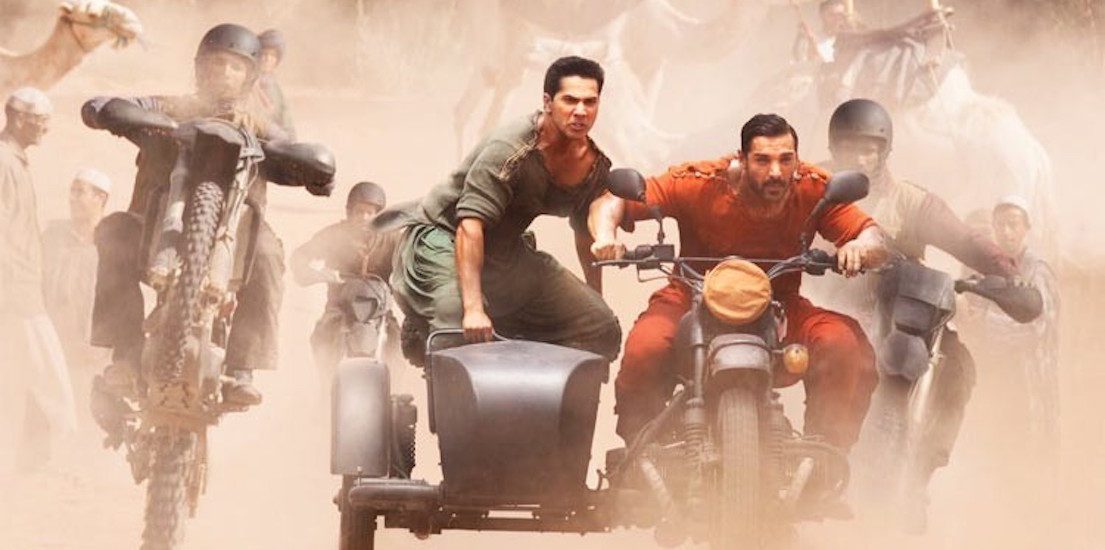Technology has empowered us to achieve infinite VFX possibilities: Rajeev
Rajeev Rajasekharan started his VFX journey in 1996. Now a veteran in the field, he has worked on major blockbusters ranging from Zindagi Na Milegi Dobara, Dirty Picture, Raavan, Delhi 6, Phoonk and Rowdy Rathore to the recently released Dishoom in his capacity as VFX Supervisor for Prime Focus.
In an exclusive chat with Pandolin, Rajeev talks about the nuances of VFX, how the industry has opened its arms to visual effects, the advancement of technology and his work for Dishoom.

Rajeev Rajasekharan
What fascinated you to get into VFX? What is the kind of formal training that is needed for the field?
I started my career in 1996 when there weren’t many VFX companies in India. In my early days, I was hooked on 2D Animation films because of my general interest in sketching. I took formal training in 2D and 3D animation software and I worked as a 2D artist for nearly three years, which gave me enough time to explore other programs and tools.
READ: SRINIVAS MOHAN ON THE VFX INDUSTRY IN INDIA
As a VFX supervisor, what is the most challenging yet unknown part of your job?
As a VFX Supervisor, you should be able to imagine the visuals that a director needs for a sequence. You should be able to clearly communicate it to the team and later work with them to bring it to reality. I think it’s essential for a VFX Supervisor to have an overview of all aspects of the VFX process, while realizing that you don’t have to be an expert in every single one of them. You also need to have a strong hold on the latest trends and technology, which you should pass on to your team, helping steer their ideas in the right direction and find solutions to difficult problems. And most importantly, you have to be excited by the work and again pass that excitement to the team that you are working with.
Would you call VFX more of an artistic job or a technical one? Or is it a marriage of the two?
It totally depends on the film that one is working on. While some are artistic, some need technical support. We definitely need to give technical support and form various layers for things to appear artistic (in the film). But in the end, we are here to cater to the need and demand of the film. When we talk about VFX it’s basically technology, which is subject to change after a certain period.
As a result of the whole digital revolution, the technology of compositing blue screen and green screen has improved tremendously
And how do you keep yourself updated with the latest technology?
As a result of the whole digital revolution, the technology of compositing blue screen and green screen has improved tremendously. We faced a lot of limitations and drawbacks in the way composites looked earlier, whereas now, it’s almost like – if you can imagine it, you can do it. The technological tools have empowered us to achieve infinite possibilities in VFX. Earlier I would have these images in my head, only to find out later that we couldn’t realize them. Nowadays, anything is possible. I always try to keep track of any new or emerging technologies through constant reading and internet searching.
Which equipment and software are largely used for VFX in India?
Autodesk 3Ds MAX, Autodesk Maya, Nuke, Adobe After Effects, Eyeon Fusion, PF Matchit, SynthEyes, Adobe Photoshop and Final Cut Pro to name a few.
READ: WE HAVE USED ALMOST EVERY POSSIBLE TECHNOLOGY IN BAAHUBALI
How would you define the relationship between cinematography and VFX as they are crucial to each other? How closely do you work with the DOP?
The DoP is the most senior creative crew member after the director and we have to work in coordination to come up with the best product. For instance, the DOP of Dishoom, Ayananka Bose is one of the best VFX-friendly DOPs in India, which helped us achieve realistic VFX output.
DOP of Dishoom, Ayananka Bose is one of the best VFX-friendly DOPs in India, which helped us achieve realistic VFX output.
Could you throw some light on the VFX work done in your recent release Dishoom. What kind of VFX does an action film demand?
In Dishoom we have delivered an entire CG helicopter, crowd multiplications, blasts, set extensions, multi layer composites in action sequences and various cleanups. VFX in action films involves the integration of live action footage and generated imagery to create realistic visuals, which would otherwise be dangerous, expensive, impractical, or impossible to capture on film.
READ: PRODUCTION POSTS – DISHOOM
With a decade of experience, can you tell us what has changed in the field and how?
Until a few years back, VFX technology wasn’t very advanced and the software and tools available were limited in their scope. A generalist artist had to work on everything with specific deadlines. Now there are various specialized departments (concept artist, modelling, animation, compositing, tracking team etc.) to achieve a better output. There are numerous VFX dependent movies/scripts coming up, which is good for the growth of our VFX industry.



